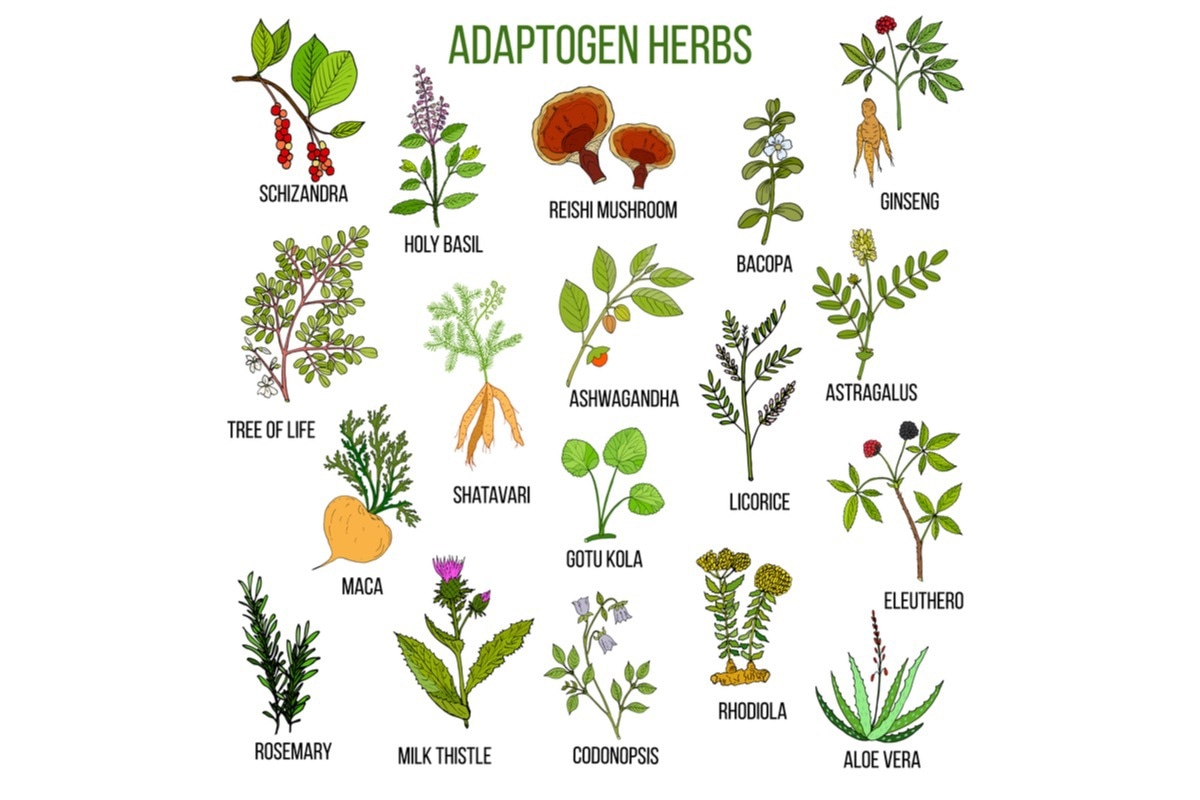Introduction
The history of adaptogens
The adaptogen concept
Notable adaptogens
Cautions
References
Further reading
An adaptogen is a non-toxic substance that is believed to heighten the ability of the human body to resist the effects of stress and restore or support normal physiological functioning. They are thought to improve the range of capabilities through structure-functional adaptation.
 Image Credit: marilyn barbone/Shutterstock
Image Credit: marilyn barbone/Shutterstock
The history of adaptogens
Adaptogens have been known for greater than 60 years, and thoroughly reviewed with regard to their pharmacology, physiology, potential uses in medicine, and toxicology. They are predominantly substances that can increase resistance to harmful effects, also known as stressors, across physical, chemical, and biological types. Moreover, they serve as metabolic regulators, which increases the ability of an organism to avoid damage from these factors by adapting to them.
In traditional Chinese medicine and Indian Ayurveda, adaptogenic plants have been used over several centuries to promote physical and mental health, enhance longevity, and boost the body's immune system. Despite these anecdotal claims, further evidence based on randomized controlled clinical trials is required to substantiate these claims and establish them as efficacious herbal medicines appropriate for use in modern medicine. In addition, knowledge of the molecular mechanisms of action is required for understanding the pharmacological activity of adaptogens.
The adaptogen concept
Stress-induced responses of the innate and adaptive immune systems are required mediators of stress signaling. These include the new endocrine immune complex that supports the process of maintaining homeostasis through the adaptive change (allostasis) in the organism. Through repeated mild exposure to stress, cells become increasingly resistant to subsequent stress exposure, culminating in a survival adaptation.
This adaptation was first described in 1936 by Hans Selye in an experiment that involved exposing rats to low temperatures, low oxygen tension, adrenaline, muscular exercise, and morphine. Nonspecific reactions resulted, which include adrenal hyperplasia, stomach ulcers, and increased secretion of cortisol and catecholamines. These non-specific reactions were termed general adaptation syndrome (GAS). This is composed of three stages:
- Recognition of stress, causing symptoms to emerge
- The acquisition of nonspecific resistance, causing symptoms to disappear
- Exhaustion, causing the same symptoms to reappear, causing death
 Image: Foxyliam/Shutterstock
Image: Foxyliam/Shutterstock
Research in the 1950s on 60s suggested that herbal extracts, termed adaptogens, could increase the duration of the recognition stage. The adaptogens were characterized as compounds that were nontoxic and polyvalent (acting through more than one mechanism to elicit an effect) in action and pharmacological effects to produce beneficial outcomes on adaptability and survival.
The adaptive stress response occurs on the cellular and organ level. At the cellular level, signaling pathways upregulate proteins that prevent apoptosis, neuropeptides, and antioxidant enzymes are active in the first phase. These adaptive stress response signaling pathways protect against neurodegeneration and increase the plasticity of the synapses, thereby reducing the risk of neurodegeneration in the future. Consequently, types based adaptogens service metabolic regulators that improve adaptability to stress, thereby increasing survival.
A hallmark feature of adaptogens is their role as stressors (good stressors) and act as mild stress mimetics and can safely induce protective responses to stress. An example of this is the compound diglucosyl-cucurbitacin R (DCR), a stress mimetic that can lower corticosteroids and releases in response to resistant stress in vivo. Similar effects can be observed with the ginsenosides and Rhodiola extract. Therefore, adaptogens exert a vaccination-like effect.
Mild (survivable) stress induces a form of ‘immunity’ to subsequent stress exposure. This resistance does not carry any memory function, and repeated exposure to the adaptogen is necessary to prolong the adaptive state. To illustrate this effect, the plastic adaptive state in response to stress-induced resistance can be compared with repetitive physical exercise, which increases endurance and performance over time.
A state of non-specific resistance (SNSR) can be achieved by gradual training of an organism to adaptogens and the resulting stress-protective responses are produced in a way that is comparable to repeated physical exercise that leads to prolonged SNSR, stamina, and increased endurance.
 Adaptogenic foods. Image: marilyn barbone/Shutterstock
Adaptogenic foods. Image: marilyn barbone/Shutterstock
Notable adaptogens
Adaptogens have polyvalent activity when interacting with the endocrine and immune systems, which have resulted in their consideration as excellent plants to use. Specifically, they can alter the amplitude, duration, and intensity of the endocrine response. Among the adaptogens, Rhodiola is the most efficient.
Rhodiola can produce an effect on white blood cells (leukocytes) and red blood cells. As such, Rhodelia is leukogenic and capable of regulating estrogens which subsequently affects the production of leukocytes. Melilotus officinalis (yellow sweet clover) and Cupressus sempervirens (cypress) support the function of the lymphatic system and lymphoid tissue. Cypress is predominantly used as an essential oil, which is diluted over superficial lymphoid tissue or in tincture.
In total, there are at least 70 types of herbal plants which are characterized as adaptogens. The most popular include ashwagandha, an evergreen shrub from India, the Middle East, and regions of Africa. This has been shown to relieve symptoms of anxiety, as well as combat aging.
Tulsi, a fragrant plant from India, is another traditional medicine used in the treatment of respiratory disorders. Other notable adaptogens include ginseng and astragalus.

 Read Next: Science and Ginseng
Read Next: Science and Ginseng
Cautions
The European Medicines Agency, in the Evaluation of Medicines for Human Use report, concluded that principles of the adaptogenic action require further clarification. They note that studies in preclinical and clinical areas contain several shortcomings; namely, lack of clear inclusion and exclusion criteria, medication description, study design, analysis, etc.
Although the data is not sufficient to support their use in medicine/ suitable for marketing authorization, the data does justify further research into the concept of the adaptogenic action. In Europe, and the USA, the term adaptogen is not permitted for use in marketing materials. However, the concept of adaptogens is considered to be acceptable when applied to traditional herbal medicines.
References
- Panossian A, Wikman G. (2010) Effects of Adaptogens on the Central Nervous System and the Molecular Mechanisms Associated with Their Stress-Protective Activity. Pharmaceuticals (Basel). doi:10.3390/ph3010188.
- Liao LY, He YF, Li L, et al. (2018) A preliminary review of studies on adaptogens: comparison of their bioactivity in TCM with that of ginseng-like herbs used worldwide. Chin Med. doi:10.1186/s13020-018-0214-9.
- Panossian AG, Wagener H. (2011) Adaptogens. A Review of their History, Biological Activity, and Clinical Benefits. Available at: https://www.herbalgram.org/resources/herbalgram/issues/90/table-of-contents/feat_adaptogens/. Last accessed November 2021.
Further Reading